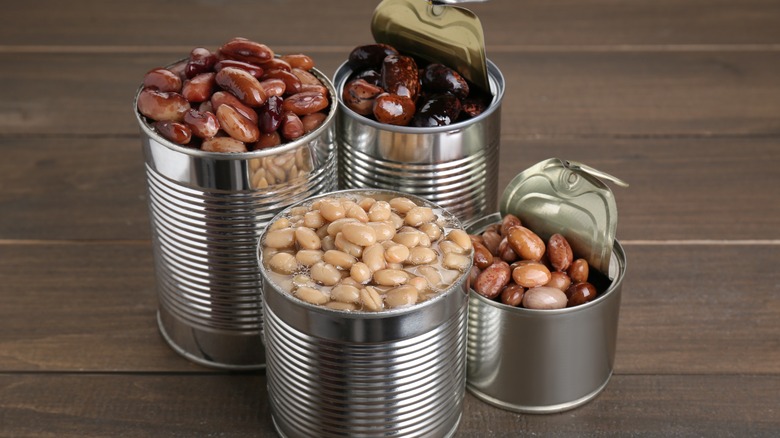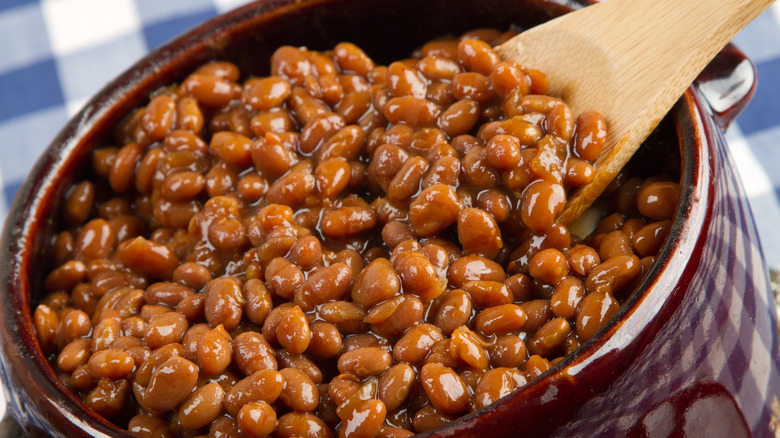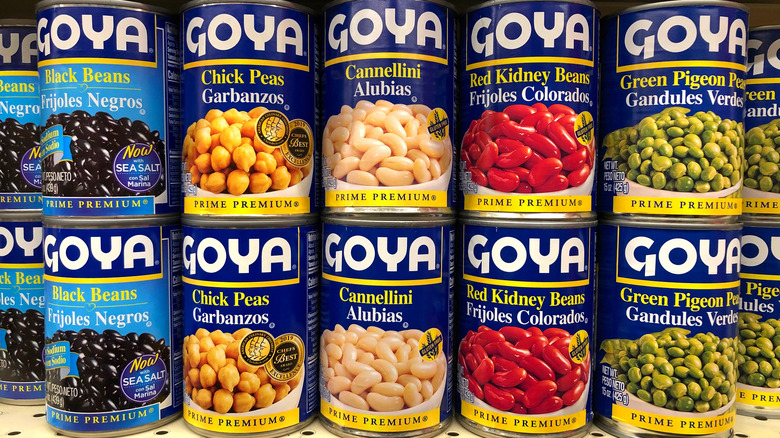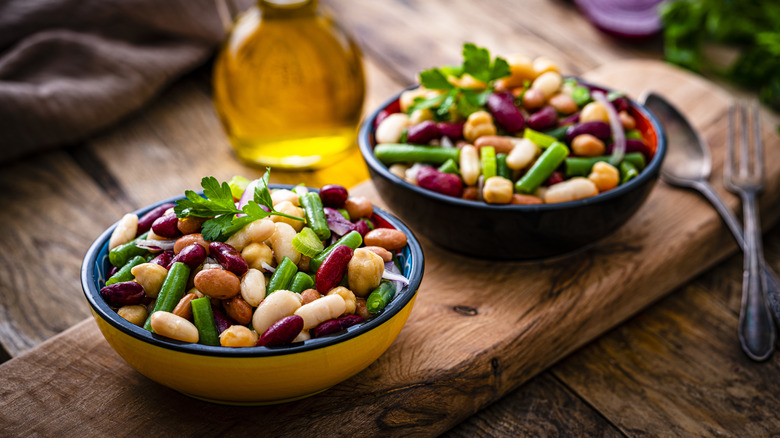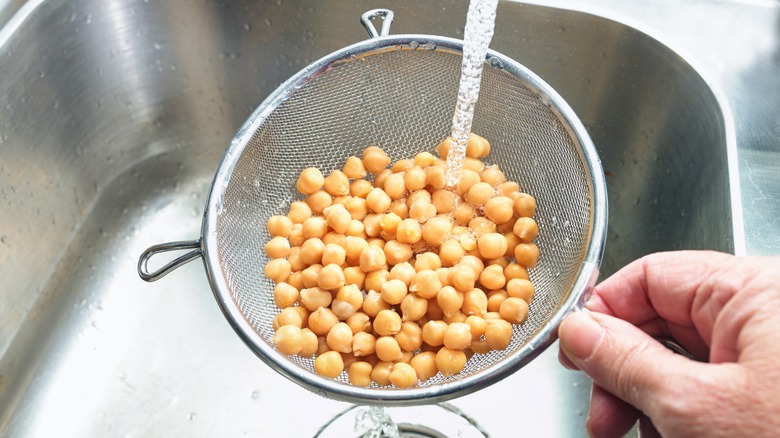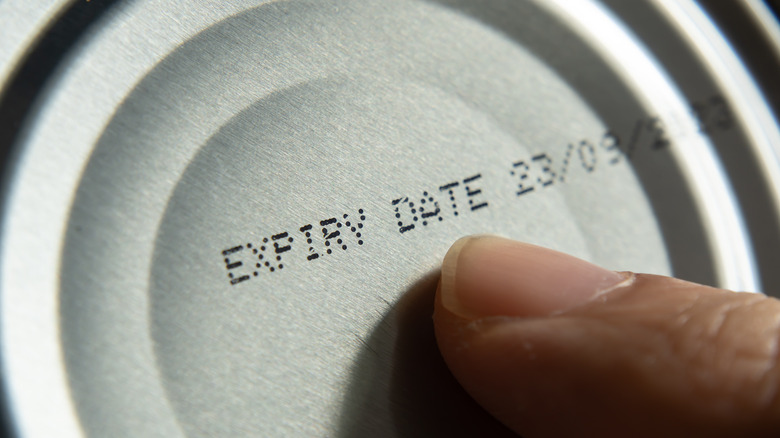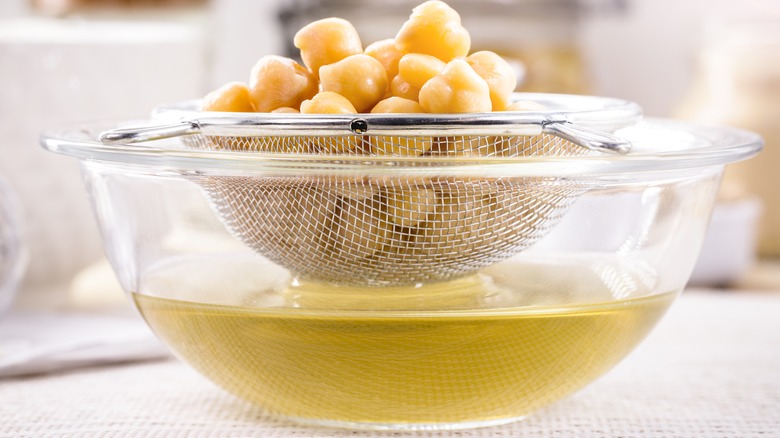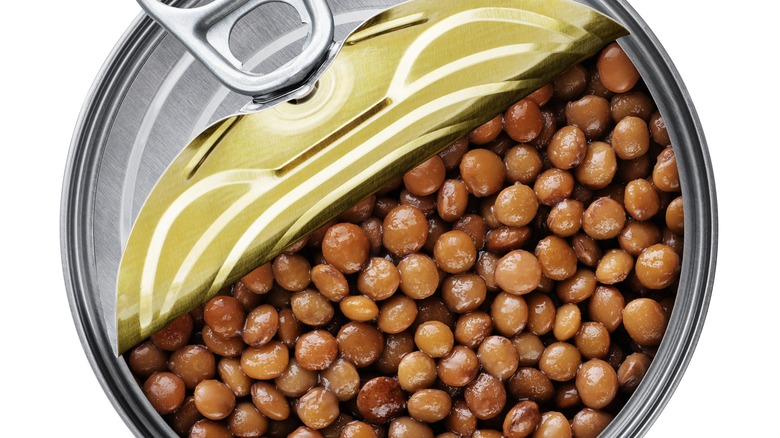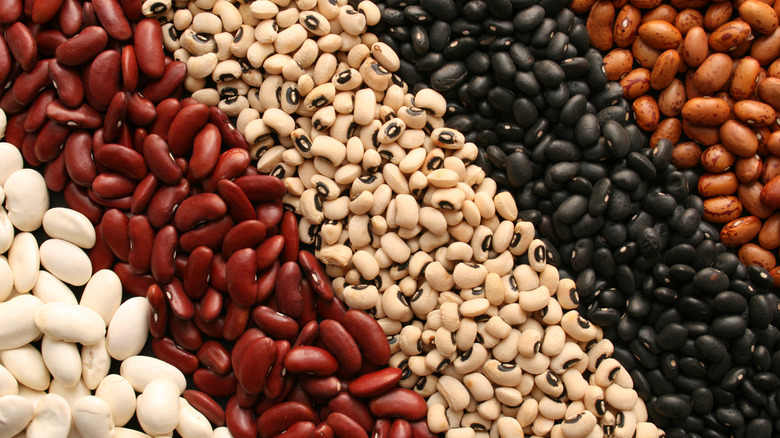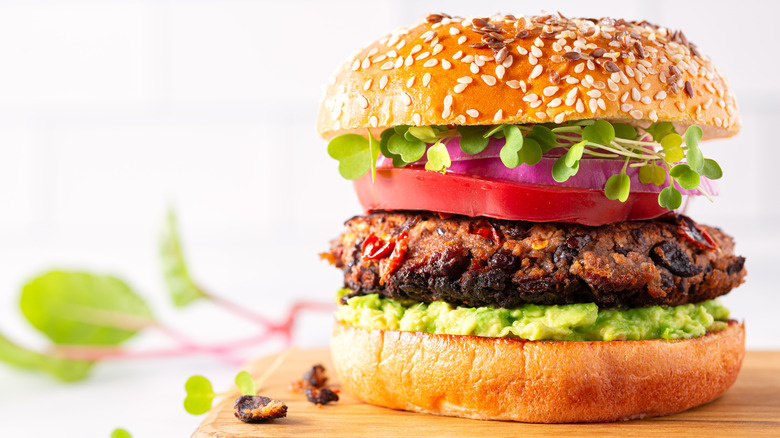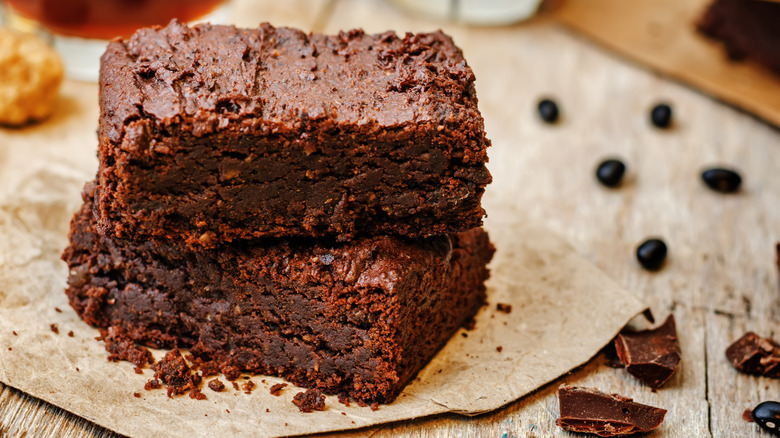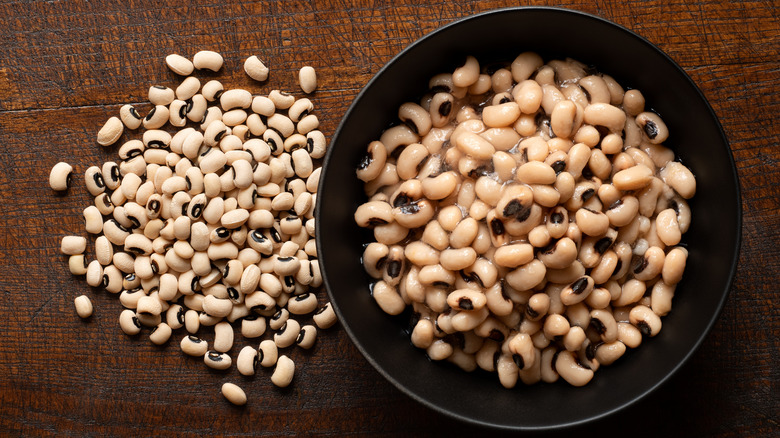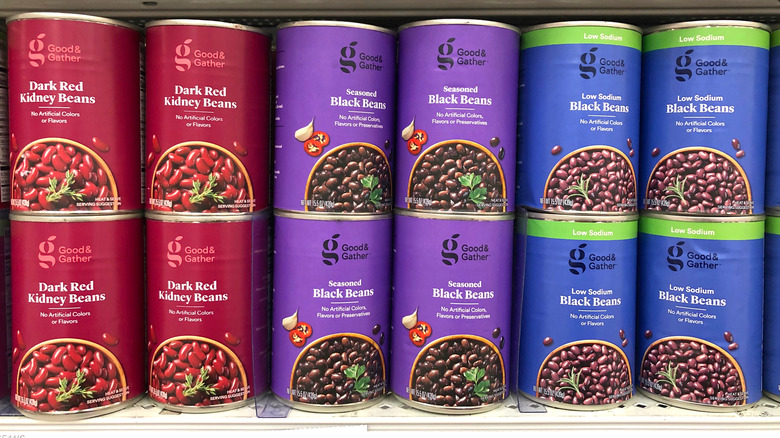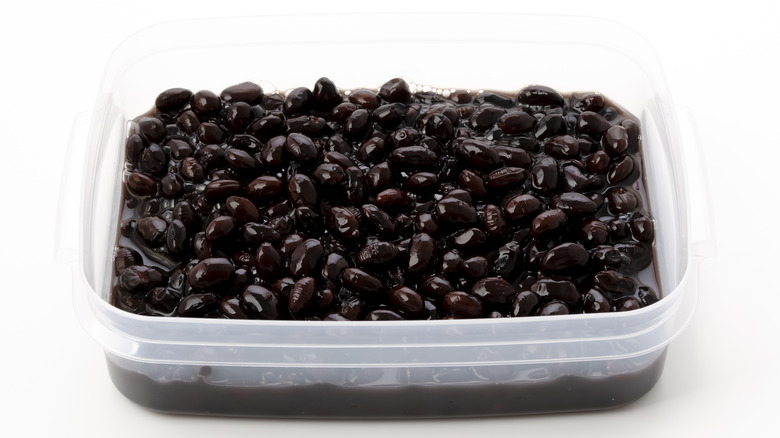Everything You Need To Know About Canned Beans
When it comes to pantry staples, few items offer the convenience, versatility, and nutritional value quite like canned beans. These humble legumes have a plethora of uses in everyday cooking. From soups and stews to salads and even desserts, canned beans serve as a vital component of many simple, flavorful, and healthy recipes. Being ready to use with no need for lengthy soaking and simmering, they can save you valuable time too.
If you want to learn more about these wholesome kitchen heroes, you're in the right place. We've put together a comprehensive guide that covers all you need to know about canned beans. We'll explore everything from the wide variety of different beans available today and their array of uses, to their cost effectiveness and amazing health benefits.
Understanding the ins and outs of canned beans can certainly revolutionize your meal prep. So, if you're someone who loves to whip up nutritious yet fuss-free recipes, it's time to embrace the potential of these game-changing pantry staples.
Canned beans are already cooked
One of the most appealing aspects of canned beans is their convenience. Because we often toss them into the pan to heat up with other ingredients, it can be easy to forget that they are in fact precooked and ready to use straight out of the can. Yes — you can eat them cold! There's no need for time-consuming soaking and simmering, making them a lifesaver on busy days.
The cooking process for dried beans typically involves soaking them in water for several hours or overnight to rehydrate them before simmering them on the stove for an extended period until tender. This can be time-intensive and often means having to plan ahead. But because canned beans are already fully cooked during the canning process, there's no waiting around or sweating over the stove required.
With canned beans on hand, you can whip up delicious meals in a fraction of the time it would take with dried beans. From a hearty bean soup or stew to vibrant salads and flavorful dips, there are so many ways to incorporate ready-to-eat beans into your cooking. Simply open up the can, drain the beans through a strainer or colander, give them a quick rinse, and you're ready to go.
There are a wide variety of different canned beans
Perhaps you tend to reach for the same two or three varieties of beans in your everyday grocery shopping, but the world of canned beans is incredibly diverse! There are options to suit every taste and all of your cooking needs. From the classic kidney bean to the creamy chickpea, canned beans come in a variety of shapes, sizes, and colors.
Among the most popular varieties are kidney beans, black beans, pinto beans, navy beans, and chickpeas (also known as garbanzo beans). Each type of bean brings its own unique flavor profile and texture, being best suited to different types of dishes. Kidney beans, for example, have a robust flavor and hearty texture. These are commonly used in chili, soups, and bean salads. Chickpeas are another incredibly versatile option, offering a nutty taste and firm texture. They can be used in a variety of dishes, including hummus, curries, and salads. Pinto beans, known for their mild flavor and creamy texture, are frequently used in Mexican dishes such as refried beans, bean burritos, and bean salads. Navy beans, small and oval-shaped with a delicate flavor, are popular in soups, stews, and baked beans.
In addition to these well-known varieties, many brands offer specialty canned beans, such as adzuki beans, mung beans, and Anasazi beans, providing even more options for experimenting in the kitchen.
Canned beans are packed with health benefits
Canned beans are incredibly rich in nutrients, offering a wealth of health benefits that make them a smart choice for any diet. Firstly, canned beans are an excellent source of plant-based protein, making them a valuable option for vegetarians, vegans, and anyone looking to reduce their intake of animal products. Protein is essential for building and repairing tissues, supporting muscle growth, and maintaining a strong immune system.
Canned beans are also rich in dietary fiber, which plays a vital role in digestive health. As well as helping to regulate bowel movements, incorporating fiber-rich foods like canned beans into your diet can also help you feel fuller for longer and stabilize your blood sugar. Canned beans are also packed with an array of vitamins and minerals. They tend to be high in folate, iron, magnesium, and potassium, among other nutrients. Folate is essential for DNA synthesis and cell function, while iron is necessary for transporting oxygen throughout the body. Magnesium plays a role in muscle function and nerve transmission, while potassium helps regulate blood pressure.
What's more, research suggests that regularly consuming beans may have protective effects against chronic diseases such as heart disease, diabetes, and certain types of cancer. Their unique combination of nutrients, including antioxidant compounds, may help reduce inflammation and lower cholesterol levels.
You don't always need to rinse canned beans before use
A common misconception about canned beans is that they must be rinsed before use. It's a common practice and one that can help to reduce their sodium content, but rinsing beans is not always necessary, depending on how you plan to use them. When beans are canned, they are typically cooked in salted water, which helps preserve their texture and flavor. As they cook, the beans release starch into the water, giving it a slightly viscous texture. This liquid, often referred to as the canning liquid or aquafaba, can actually be quite flavorful and nutritious. In dishes where aquafaba contributes to the overall flavor, such as soups, stews, and dips, rinsing the beans may not be necessary or even desirable.
However, if you're using beans in recipes where the canning liquid could affect the taste or texture, such as in casseroles, salads, or pasta dishes, rinsing the beans can help mitigate any undesirable flavors or textures. Additionally, draining and rinsing canned beans can help reduce their sodium content by about 40%, according to The Bean Institute. That may be beneficial for those looking to lower their sodium intake.
If you choose not to rinse your canned beans, just be mindful of their sodium content, especially if you have dietary restrictions or health concerns. Opting for low-sodium or no-salt-added varieties of canned beans can be a great option if you still want to use the canning liquid in your cooking.
Canned beans do have a shelf life
Despite their convenience and long-lasting nature, canned beans do in fact have a shelf life. Being such a common pantry staple, many of us leave stacks of bean cans sitting in our cupboards for years on end. While they won't spoil anywhere near as quickly as fresh produce, each can will still be printed with an expiration date that's worth paying attention to.
Typically, canned beans have a shelf life of around two to five years when stored in a cool, dry place away from direct sunlight. When inspecting canned beans for freshness, look for any signs of damage, rust, or swelling of the can, which may indicate spoilage or contamination. If the can appears damaged, it's generally best to toss it. Otherwise, if you're unsure how long a can has been in your pantry, check the expiration date. Consuming expired canned foods can pose health risks, so again, if the date has passed, dispose of the can.
Once opened, canned beans should be transferred to a glass or plastic airtight container and stored in the refrigerator. They should keep well for up to four days.
The liquid in canned beans makes a great vegan egg replacement
One of the most surprising uses for the liquid found in canned beans — called aquafaba – is its role as a vegan egg replacement in cooking and baking. This velvety liquid, which results from cooking beans in water during the canning process, possesses unique properties that make it an excellent substitute for egg whites in a variety of recipes.
Aquafaba can be whipped into a foam with a similar consistency to beaten egg whites, which means it's wonderful for making meringues, mousses, and even homemade mayonnaise. Its ability to trap air bubbles and create a light, airy texture is especially valuable in vegan baking, where the traditional use of eggs is not an option. According to The Vegan Society, two tablespoons of aquafaba can be substituted for one egg white.
To use aquafaba as an egg replacement, simply drain the liquid from a can of beans into a bowl and whisk it up until it becomes frothy and opaque, resembling whipped egg whites. It's a fantastic option, since it's natural, readily available, and much more affordable than commercial egg replacers. Plus, using aquafaba helps reduce food waste by repurposing a byproduct that would otherwise be discarded.
Canned beans don't always contain an excessive amount of salt
It's true that some canned beans contain high levels of sodium, but this isn't always the case. Many brands now offer low-sodium or no-added-salt varieties, which are great if you need to restrict your salt intake.
These varieties are processed with less salt during the canning process, resulting in a lower overall sodium content per serving. When shopping for canned beans, simply check the nutrition label and compare the sodium content of different brands and varieties. Look for options that contain around 140 milligrams of sodium or less per serving, which is considered low-sodium, according to guidelines from the U.S. Food and Drug Administration.
The saltiest element of a can of beans is the canning liquid, so you can reduce the sodium content by draining and rinsing the beans under cold water before using them in your recipes. It's a simple step that can drastically reduce the levels of salt without compromising on flavor and texture.
Canned beans are just as nutritious as dried beans
In terms of convenience, canned beans have a clear advantage over dried beans. But, are they as healthy as their dried counterparts? The answer is yes!
Canned beans are equally as nutritious as dried beans, as they retain the majority of their vitamins, minerals, and fiber content during the canning process. In a comparison of dried and canned black beans, Eating Well found negligible differences in nutrition. For example, a cup of canned beans contained 17 grams of dietary fiber and 14.5 grams of protein, while the prepared dried beans had 15 grams of both fiber and protein. And when it came to potassium and magnesium, the canned beans contained just slightly more of the former, while the dried beans had minimally more of the latter.
One potential downside of canned beans is their sodium content, particularly in varieties that are processed with added salt. However, as we've already covered, many brands offer low sodium or no added salt options, which can be a great alternative. Whether you choose canned beans or dried beans, both options offer a wealth of health benefits. So there's no need to worry about missing out on nutrients.
Canned beans are extremely versatile
There's no question that canned beans offer incredible versatility in the kitchen. These humble legumes can be used in a wide variety of dishes, adding texture, flavor, and nutritional value to every recipe.
In savory dishes, canned beans serve as a hearty and satisfying protein source that can elevate everything from soups and stews to salads and sandwiches. Soft in texture, they're easy to blitz up into flavorful sauces and dips. Plus, they boast a subtle flavor, which makes them great for jazzing up with your preferred herbs, spices, and sauces. Beans can also bring substance and depth to vegetarian dishes, such as bean chili or bean burgers, and can be mixed with grains like rice or quinoa to create a complete protein-packed meal.
Canned beans are truly a staple in all kinds of cuisines, playing starring roles in dishes like Middle Eastern hummus, Indian chana masala, and French cassoulet. Their ability to absorb other flavors and spices makes them incredibly versatile, so they work well for a wide range of cooking styles. So, when it comes to cooking with canned beans at home, don't be afraid to get creative!
You can use canned beans in baking
As strange as it might sound, canned beans can be a secret weapon in your baked goods. They can add moisture, texture, and nutritional value to a wide range of sweet treats.
A popular way to use canned beans is by blitzing them up and incorporating them into home-baked treats. The beans add moisture to the batter and result in a wonderful texture that will pass for a traditional bake while adding a hidden nutritional boost. Thanks to their neutral flavor, they can blend seamlessly into the mixture. When pureed, black beans create a smooth, creamy base that pairs well with chocolate and other rich flavors, making them a popular choice for adding to brownies. Baking with chickpeas is also a great option if you follow a gluten-free diet, as they can serve as a great flour replacement in a range of recipes like cookies and muffins.
To use canned beans in baking, simply drain and rinse them thoroughly to remove the canning liquid. Then, you'll need to blitz the beans in a food processor or blender until smooth, either alone or in combination with some of the other ingredients, depending on your specific recipe.
Canned beans cost more than dried beans
Costs are important to consider when deciding which foods to pick up at the grocery store, and there is a noticeable difference in the price tag of canned and dried beans. Canned beans offer a much shorter prep time, but they typically come with a higher price tag than dried beans. This difference in cost is due to the additional processing and packaging involved in the canning process. Canned beans are precooked, packed in liquid, and sealed in airtight cans, whereas dried beans require minimal processing and are often sold bagged and in bulk.
On a per-serving basis, canned beans can be significantly more expensive than dried beans. But of course, you have to consider the overall value and convenience that canned beans provide. While you may pay more upfront for canned beans, you're also paying for the time and effort saved in preparing them (and the gas or electricity costs associated with cooking them). Canned beans also have a longer shelf life, which means they're less likely to go to waste than dried beans.
If you're on a tight budget or regularly cook large batches of beans, dried beans may be a more economical choice. Ultimately, the decision is down to your personal preferences.
Canned beans don't always contain preservatives
Canned foods actually don't require a ton of added preservatives to ensure a long shelf life. For canned beans and many other food, it's in fact the canning techniques that help to preserve flavor and freshness for so long, without the need for additional additives.
Proper canning techniques, including sealing the cans and heating them to high temperatures, can effectively prevent bacterial growth and spoilage without the need for added preservatives. Many brands offer canned beans with minimal ingredients — often just beans, water, and salt. When shopping for beans, look for options labeled as natural and preservative-free to ensure you're getting a product without any artificial additives. Even canned beans that do contain preservatives often use natural preservatives such as citric acid, which is derived from fruits and considered safe for consumption. Citric acid in particular can help to maintain the beans' color, flavor, and texture without compromising their nutritional value.
If you prefer to avoid preservatives altogether, consider cooking dried beans from scratch instead of relying on canned varieties. While this method requires more time and effort, it allows you to have complete control over the ingredients and seasonings used in your dishes.
Store leftover beans out of the can
If you've opened a can of beans and used only a portion of its contents, make sure to store the leftovers properly to maintain their freshness. If you want to preserve flavor and quality, leaving beans in an open can is a no go.
To preserve their taste and texture, it's best to transfer any unused beans to an airtight container before refrigerating or freezing them. Leaving beans exposed to the air can lead to them drying out or picking up odors from other foods in the fridge. The U.S. Department of Agriculture recommends using a glass or plastic container, as this will help the beans to retain their flavor for longer. Whilst storing beans in a covered can doesn't impose any major health risks, it can impart an unwanted metallic taste into the beans.
In the refrigerator, leftover beans can typically be stored for up to three to four days. For longer-term storage, consider freezing them in airtight containers or freezer bags. To preserve moisture, the makers of Bush Beans recommend adding enough water to the bag or container to cover the beans. Frozen beans will retain their quality for up to six months and can be thawed, drained, and reheated on the stove or in the microwave as needed.
